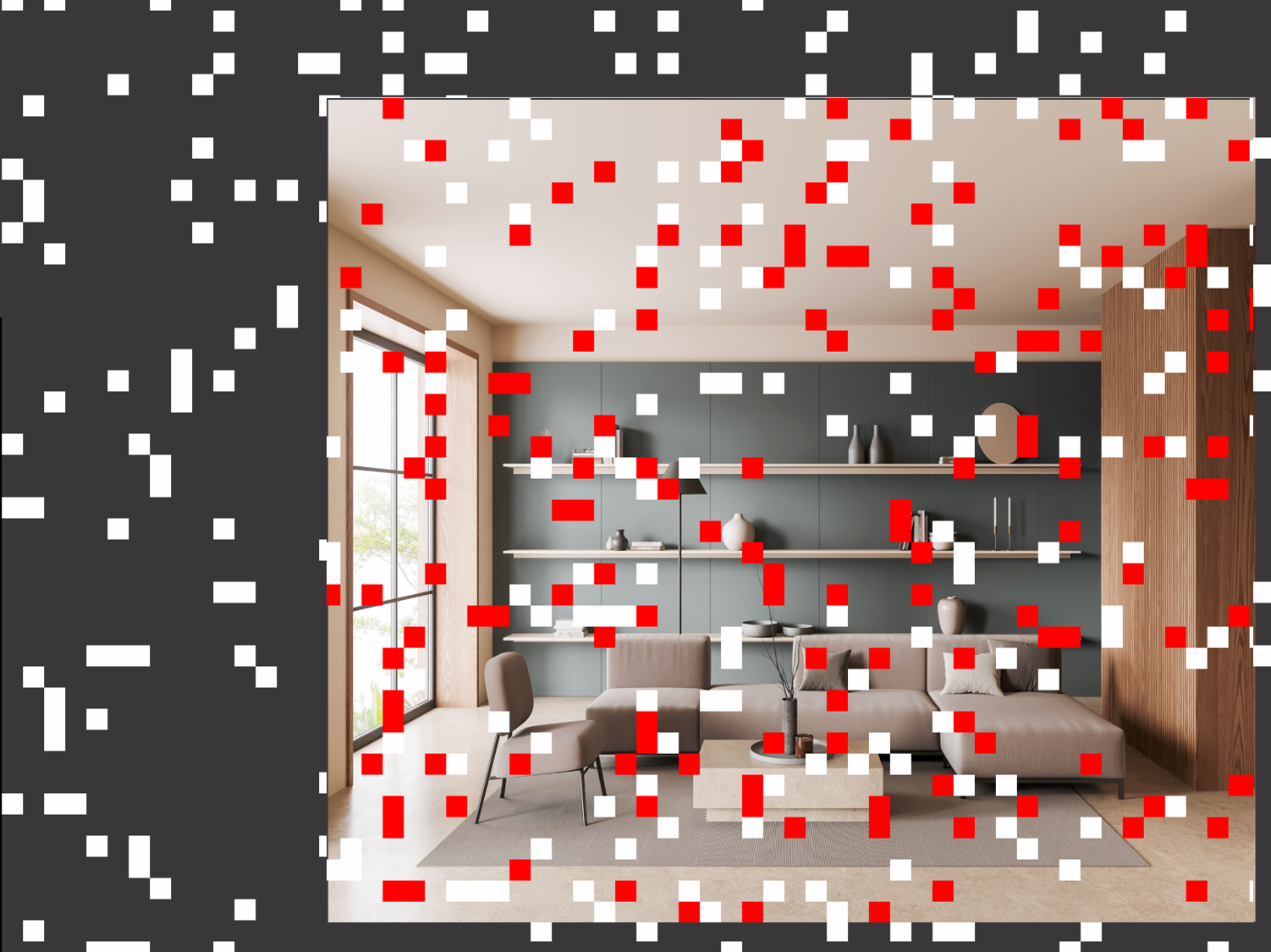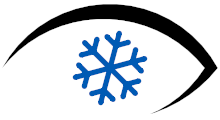"Zoom" concept
Simulators like the one at visionsimulations.com do not allow VS patients to fully differentiate their visual snow percept from the physically displayed noise. This might be a problem if the aim is to quantify the VS parameters. The zoom concept addresses this problem by allowing better differentiation.

Task: VS patients are supposed to adjust the properties of the physically displayed noise (here illustrated by red dots) to match theirsubjectively perceived VS (here illustrated by white dots but not physically displayed in the simulator).
Illustrated is a situation where the simulated noise matches the visual snow, for example, in terms of dot size and dot density.
Problem: However, patients cannot differentiate between the physically displayed noise and their subjectively perceived VS - they always perceive both. This makes adjusting dot density cumbersome without more specific instructions, such as "adjust it to double the density". Without such guidance, matching the subjectively perceived VS 1:1 would imply adjusting the physically displayed noise to zero.

Zoom-concept: The basic idea is to enable differentiation between the physically displayed noise and the subjectively perceived VS through the size of the displayed noise dots. This is achieved by displaying the image twice - once small and once at 3x bigger. The noise physically displayed on the bigger image (illustrated by red dots) should be adjusted to match the subjectively perceived VS on the small image (illustrated by white dots). Since the physically displayed dots are much larger than the subjectively perceived VS, the two can be differentiated, making it easier to ignore the VS in the bigger image during adjustment.
Now, the big dots can be adjusted to match the 3x zoomed version of the VS in a clear-cut way. For example, the visual snow density (in the small image) can be matched to the density of the physically displayed noise without having to double it.
